Dairy milk provides much more than just lactose
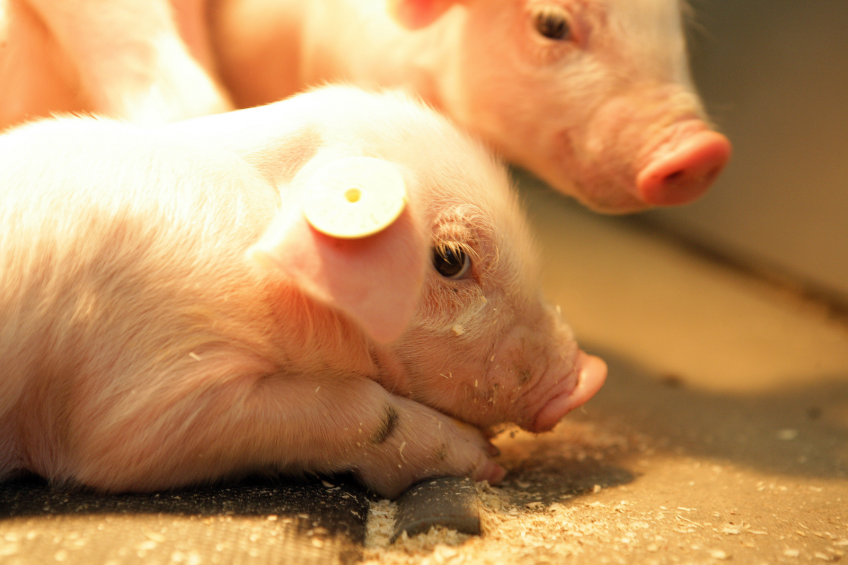
Piglets need high quality milk in their first days of life. In highly prolific sows, providing additional milk sources are needed to make sure all piglets get what they need. What makes milk replacers from dairy sources the right choice for piglets?
Due to larger litter sizes and increased competition for sow milk, nutrient availability for just-born pigs is often limited. Providing an additional soluble milk replacer to suckling piglets will increase nutrient intake of the piglets and, therefore, improve pre-weaning daily weight gain and weaning weights. An effective creep feeding programme has also proven to stimulate pre- and post-weaning feed intake and gains during the first few days after weaning, as it acclimatises the piglets to solid feed before weaning and stimulates the development of the digestive system. Within this respect, two main questions can be raised. Why do we feed pigs with milk products originating from dairy cows? And, why would pork producers or feed mills in e.g. Thailand or Chili choose to work with EU dairy?
Increased survival rate
Piglets in commercial husbandry are generally weaned between three and four weeks of age for economic reasons. Many piglets have no experience with solid feed before weaning, resulting in low feed intake and growth after weaning. Newly weaned piglets often show a high incidence of diarrhoea due to reduced gut health, low immune status and high stress levels at weaning.
Milk products are commonly applied in feed formulation of young piglets to facilitate the transition from sow milk to dry, vegetarian diets after weaning. The inclusion of milk in creep and weaner diets contributes to the easy acceptability and palatability due to a familiar smell, taste and digestibility. A gradual decreasing line in highly digestible dairy proteins and lactose contributes to a less abrupt change in feeding, lower levels of stress and gastro-intestinal disturbances. In general, the use of high quality milk products leads to improved performance, lower levels of mortality and higher profitability for the pork producer.
In very early weaning systems or sow-less rearing systems, (automatic) supply of a liquid milk replacer is necessary, as piglets are not ready yet to survive on solid feed. Especially in large litters there are more weak piglets with lower birth weights. On average, each additional live born piglet per litter accounts for a drop in birth weight of about 30 g. Increasing the survival rate at weaning is thus one of the biggest challenges and, therefore, special attention should be paid to these vulnerable piglets. A milk replacer, based on the best-quality dairy ingredients, to which piglets have easy or even ad lib access, is key in achieving higher survival rates in high productive pig systems.
Valuable nutrients
When supplementing piglets with dairy milk products, valuable nutrients are being offered. And, moreover, those nutrients are readily digested by the young animal’s immature gastro-intestinal system. Macro-constituents of milk are butter fat, casein and whey proteins and lactose. Besides that, micro-nutrients like e.g. minerals (e.g. calcium, phosphate), vitamins (e.g. vitamin A), immunoglobulins and enzymes define its nutritional value.
Lactose
Piglets thrive on lactose. This disaccharide sugar (glucose b(1-4) linked to galactose) is easily digested in infant mammals due to production of sufficient amounts of enzyme, called lactase. Also, it increases the palatability of the feed. In comparison to simple sugars, the osmotic pressure developed in the gut is lower, decreasing the risk for secretory diarrhoea. In the pre-weaning phase and immediately after weaning, the benefit of high concentrations of lactose (25-30%) is the largest. This decreases as the piglets get heavier.
Proteins
Unfortunately, inclusion of milk in piglet diets is often considered only as a source of lactose, not taking into account the value of protein or fat. Milk proteins are highly digestible and have excellent levels of essential amino acids. In soluble milk replacers and creep feed, skimmed milk powder can be used as a source of casein, resembling the source of protein provided by the sow as well. Casein is the milk protein fraction coagulating at lower pH. The essential amino acid pattern of porcine and bovine casein are fairly similar, with the possible exception of methionine, which in porcine casein is less than 50% of that in bovine casein. Due to high prices, the use of milk powders in piglet formulae has declined in recent years. Next to casein, lactalbumin and lactoglobulin proteins from whey are valuable to use in piglet diets. Sweet, acid and delactosed whey products are available in the market.
Fat
Milk fat or butter fat is high in short-chain fatty acids, of which butyric acid is considered as one of the most effective energy sources for intestinal walls. The absorptive epithelial cells found on the intestinal villi use the energy provided by butyric acid to stimulate villi growth and thus the ability to absorb nutrients.
Availability and quality
Relying on European-derived milk products has various advantages, mainly explained by availability and guaranteed quality. Cow milk is produced in every single EU member state without exception and represents a significant proportion of the value of the agricultural output. This production is even likely to go up, as in 2015, a milk quota system in the EU will be lifted. This development only illustrates the importance of having built and implemented new spray dryers to process additional volumes of dairy products.
In addition, milk products that are used within the EU to produce feed for sale, all comply with the regulations set to guarantee feed and food safety, see box ‘Europe’s strict milk quality regulations’.
Antibiotics and alternatives
The long term use of medicated feeds and the carry-over to non-medicated feeds has led to antibiotic resistance in microbes due to a constant exposure to very small quantities of the drug. Attempts are being made to reduce the usage of antibiotics by producers in various countries in Europe. This asks for radical changes in sow management, creep feeding, weaning time, barn climate, hygiene, and water quality. Also feed formulation becomes more important and the search for alternative ingredients to fill the gap continues. Improving gut health and stimulating feed intake are key factors in this.
Spray-dried blood plasma is generally considered as a highly concentrated, well-performing source of proteins which was re-allowed for use in piglet diets in 2005. In total, 36% of blood plasma consists of globulins, of which the immunoglobulin fraction is considered as beneficial for immunity and gut health. Blood plasma, however, is expensive and a dedicated production line is necessary. In addition, recently blood plasma received some bad press when it was named in Canada as a potential cause of spreading the Porcine Epidemic Diarrhoea virus in North America. Although later studies by the Canadian Food Inspection Agency could not demonstrate the connection, this has raised the interest for alternative protein sources.
Dairy replacement
Nukamel, originally a calf milk replacer company with plenty of experience in dairy products and producing in Belgium and the Netherlands, has put ample effort in the development of piglet ingredients based on EU milk. Based on principles of single origin dairy resources, using low heat milk products, fermentation and quantifying immunoglobulins, the company combines keen sourcing with a specified production process to achieve high quality standards for its dairy products.
The company developed its Nukamix range of products, destined to ease the weaning process of piglets. Nukamix Extra is a piglet feed ingredient, which fits well in the general concept. Digestible dairy and vegetable protein (together 41%) is combined with coconut and butter fat (together 8%). The ingredient is highly suited to include in creep and weaner feeds and is designed to be an alternative to other high performing protein sources.
A diet containing spray-dried blood plasma (T2) was used as a positive set-off in a trial. The effect of the dairy protein source (T3) on the performance of weaned piglets was measured and compared to the positive standard and a negative control diet (T1).
Piglets, weaned at 21 or 28 days, were offered ad libitum an experimental weaner feed (T1a-T3a) from 2-9 days post-weaning. From day 9 until day 20 post-weaning a grower feed (T1b-T3b) was provided. In total, 540 piglets were divided into three groups (Table 1). Zootechnical performance of the piglets from days 2 to 20 post-weaning are shown in Table 2. The dairy protein source yielded in this test the better results on growth and feed intake.
Source: Pig Progress magazine, Volume 30. No. 5 (2014)
Europe’s strict milk quality regulations
The ‘somatic cell count’ (SCC) is a main indicator of milk quality, as these cells are produced as part of the immune response to mastitis. Milk with an SCC of more than 400,000 is deemed unfit for human consumption. The EU directives mention specific animal health requirements and specific bacteria limits in raw milk and milk for processing. Milk may only come from herds that are officially tuberculosis-free and brucellosis-free. The complete process of milking, storage and transport to the processing plants should occur in clean and cold (<4°C) conditions, to discourage microbial growth. The usual pasteurisation process involves a heating time of 15 seconds at 72°C, sufficient to kill 99% of contaminating bacteria. There are EU regulations regarding maximum residue levels of veterinary medicinal products and hormones (bovine somatotropin) in foodstuffs of animal origin.
 Beheer
Beheer

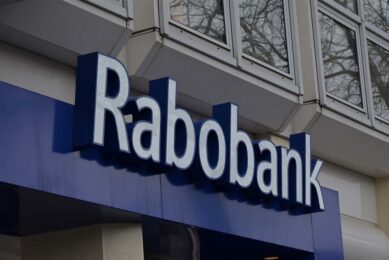
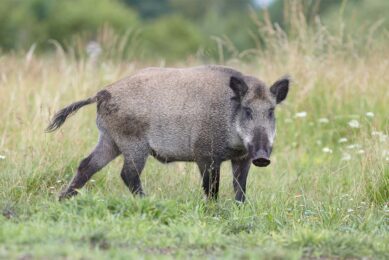
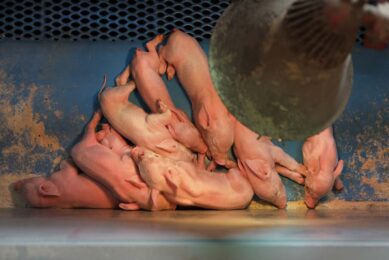
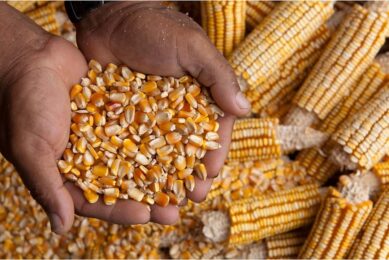



 WP Admin
WP Admin  Bewerk bericht
Bewerk bericht